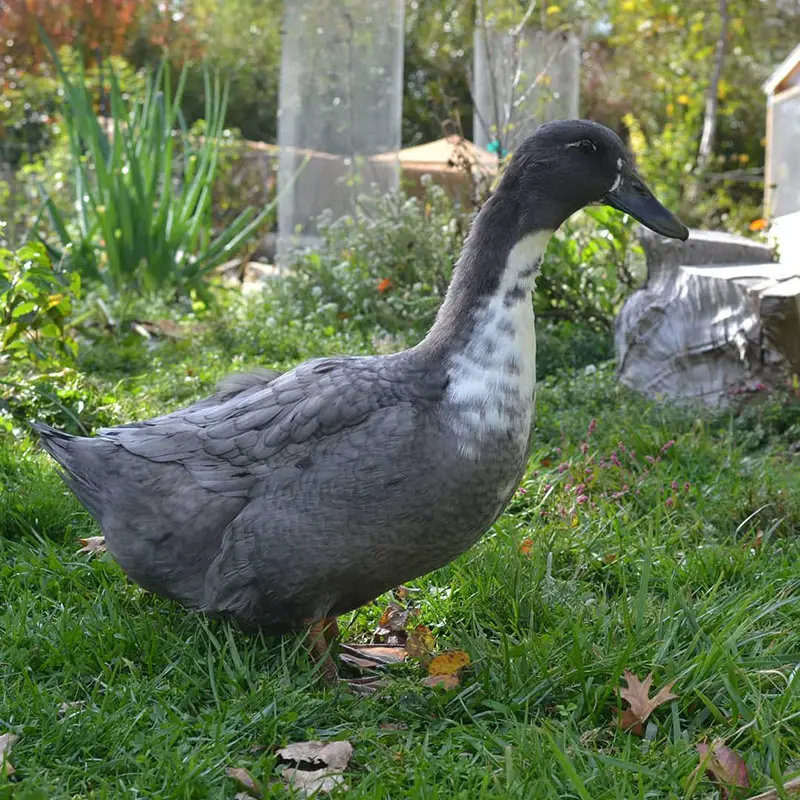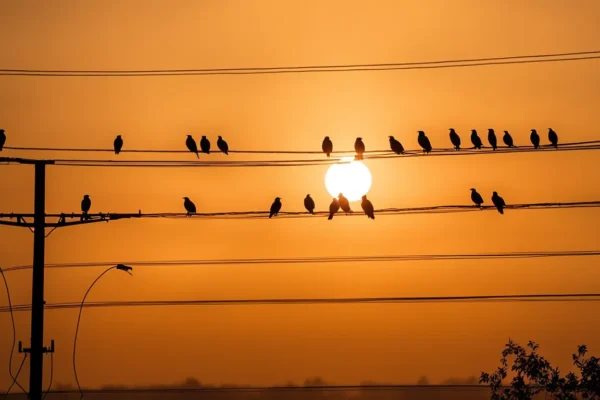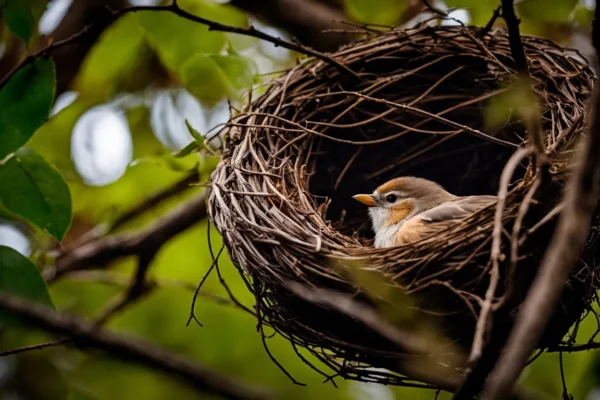Prepare to be captivated as we embark on a journey into the intriguing world of crows. These feathered geniuses, belonging to the highly intelligent Corvidae family, possess astonishing flexibility when it comes to nesting. With around 45 species scattered across the globe, from the northern corners of Europe to the lush tropical forests of South Asia, crows never cease to amaze. So, join us as we unravel the lesser-known aspects of Crows nests and unlock the mysteries behind their remarkable adaptability.
Where do crows make their nests?
Crows may build their nests almost anywhere, even on the ground and in lofty buildings. The majority of crow species are not very picky about where they build their nests, although large, densely forested trees with wide branches and sturdy tree forks are their preferred environment. They have even been seen nesting in brick buildings, alpine rock formations, and the edges of cliffs.
A crow’s nest normally rises over 10 meters in height, perhaps reaching 50 meters or greater. Crows, however, often construct their nests on or very near the ground. One study of American crows in Mandarte, British Columbia, for instance, discovered that almost 45% of the nests were constructed on the ground. The average nest height in New York, Virginia, and Ontario was between 10 and 20 meters.
Another sign of how cunning and adaptive this clever bird is is the variety of crow nesting places.
What do crow nests look like?

Image Source
Large and clumsy crow nests are made of relatively short sticks, around the length of a pencil. The typical Carrion crow nest is between 18 and 25 cm (8 and 10 in) deep and is around 45 cm (1.5 ft) broad. Crows often resort to long grass and plant stems as an alternative when dead twigs are scarce. The nest has a cup-like form overall.
After the superstructure is complete, smaller, softer materials like bark, grass, twine, paper, leaves, moss, mud, and dung are used to line the nest. Finally, a second inner lining is created using soft organic materials like animal hair and moss. The resultant nest is far bigger than you would anticipate for a bird the size of a crow.
Crows’ nests have been shown in studies to be strong, last for many years, and even be utilized by other species after the crows have left (though they often collapse in the winter). Additionally, if the first nest fails, crows may construct a second nest in the same tree or nesting location. Crows have even been seen constructing three nests, according to reports!
When do crows build their nests?
Crows normally begin constructing their nests in late winter (February to early March) and spring (April to May) in North America and northern Europe. Nest construction picks up steam during the brighter days of March but may continue far into June if circumstances are unfavorable or if nests collapse.
The breeding season grows increasingly irregular as you go farther south. For instance, the Cape Crow of Africa constructs nests in Sudan from December to February, Eritrea and Ethiopia from February to May, and Kenya from March to April. Depending on the environment and circumstances, the Large-billed crow (also known as the Jungle crow) builds its nest for a large portion of the year in Asia.
How long do crows nest for?
Crows are adaptable when it comes to their nests and may decide to construct a new one close by or return to the same one year after year. Although some crows travel, they often return to the same mating areas year after year.
Crows build their nests at least during the mating season. Approximately one month after hatching, baby crows may remain with their parents for months or even years.
Crows are one of the few bird species that have ‘nest helpers,’ in reality. Crow juveniles may remain to assist their parents in creating a nest and raising their younger siblings’ offspring!
How do Crows make their nests?
Crows of both sexes typically construct the nest jointly, although sometimes the male may bring sticks to the nest for the female to assemble and integrate. For instance, it has been found that the female American crow does much of the “fine-tuning” while the male provides the materials.
Other crows who are not breeding may sometimes come in to assist in constructing the nest, known as nest helpers. Young from the previous year or other birds connected to the parents are often nest helpers.
The construction of a nest may get rather hectic when there are many helpers. A group of crows was seen by one birdwatcher bringing sticks to a single female nest builder. She was unable to utilize the supplies quickly enough, which caused the nest to become disorganized. It’s possible that “too many crows spoil the broth” instead of “many crows make light work” applies here!
When do crow babies leave the nest?

Image Source
When a baby crow is ready to leave the nest, which takes around 25 to 35 days, they often leap out and rest on a nearby limb.
Before taking their maiden flight, baby crows might spend up to 10 days perching in the tree canopy. After hatching, young crows often remain in their parents’ protective care for at least two to three months.
How many broods do crows have?
Crows only have one brood of young every year, but if the first fails sufficiently early in the mating season, they will often attempt a second.
Crow species like the Cape crow and, sometimes, the Hooded crow, have been seen to have two broods. Crow parents seldom have time to raise two broods since they devote so much time and energy to rearing their own.
Are crows consistent in their nesting locations?
The majority of crows decide to construct new nests every year, however, others decide to renovate or repair existing nests. Repairing and remodeling may be a wise decision when nesting sites are few since it largely relies on the availability of new nesting locations and new materials.
Crows often reproduce in the same region each year, even if they don’t always use the same precise nest. Although many species of crows are resident and sedentary and don’t go far from their original habitat, migratory crows often return to the same nesting location each year.
Also Read: What do Crows eat
What do crow eggs look like?
Almost all crow eggs are either blue-green or olive-green in color.
American crow eggs are more olive in color compared to carrion crow eggs’ bluer hue. Crow eggs also have blotchy, grey-brown patterns, with the majority of the blotches centered towards the egg’s widest end.
Typically, American crow eggs are between 2.6 and 3.1 cm (1 and 1.2 in) long. Also different is their form; some are more oval and others are more elliptical.
When do crows lay their eggs?
Crows typically lay their eggs during the months of early April and June over most of North America, Europe, and North and Central Asia. Most crows in the UK lay their eggs between April and May.
Crows may lay eggs in Africa and certain regions of Asia in December, January, and February, or in August, September, and October. As you get south, the usual breeding season becomes increasingly fragmented.
Do crows use nest boxes?
Crows seldom use nesting boxes because they are too big for the majority of standard nesting boxes.
They also choose to build their nests in more open spaces, however, they are adaptable and sometimes select unusual locations. Crows seldom nest within nesting boxes or hollows in trees, preferring to construct open nests instead.
Where do crows sleep at night?
Crows spend the night resting on tree branches or in exposed structures.
The majority of crow species are communal roosters, which means that at night, particularly during colder weather, they congregate in groups to roost. Crows often congregate in large groups at their roosts each night in towns and cities.
Crows also often sleep inside cities at night, perhaps because it’s warmer and safe from nocturnal predators like owls.
Final Thoughts
our deep dive into the nesting habits of intelligent crows has revealed a world of astounding adaptability and ingenuity. From their preference for tall structures and the upper canopy of trees to their surprising nesting choices on cliffsides, hedgerows, and even the ground, crows defy conventional expectations. Their resourcefulness knows no bounds, and their ability to thrive in diverse environments is a testament to their intelligence. As we bid farewell to these remarkable avian beings, let us carry with us a newfound appreciation for their remarkable nesting behaviors and an admiration for their unwavering adaptability. The world of crows is truly a captivating realm that continues to unfold, inviting us to marvel at the wonders of nature.
Frequently Asked Questions
What types of structures do crows prefer for nesting?
Crows exhibit flexibility in their nesting habits, preferring tall structures like trees, buildings, and cliffsides. However, they are known to adapt to various habitats and can nest in hedgerows and even on the ground.
Do crows build their nests in groups or individually?
Crows generally build their nests individually. However, they may nest in close proximity to one another, forming loose colonies in certain areas.
Are all crow species equally adaptable in their nesting choices?
While most crow species demonstrate adaptability in their nesting choices, the extent may vary. Some species show a higher preference for specific structures or locations, while others exhibit more versatility.
Why do crows nest on the ground?
Although it may seem unusual, some crow species, such as the American crow, are known to build nests on the ground. This behavior is believed to provide protection from predators and offers suitable nesting conditions in certain habitats.
How long does it take for crows to build their nests?
The nest-building process for crows can vary, but it generally takes several days to a few weeks. Both males and females contribute to the construction, with the male collecting and bringing materials while the female arranges them.
Do crows reuse their nests?
Yes, crows tend to reuse their nests, especially if they were successful in previous breeding seasons. They may repair and modify the existing nest or build a new one nearby.
Do crows defend their nests?
Yes, crows are protective of their nests and will defend them against potential threats. They may engage in aggressive behaviors, including dive-bombing or mobbing, to ward off predators or intruders.






One thought on “Definitive Guide to Crows Nesting Behavior, Location and Eggs”